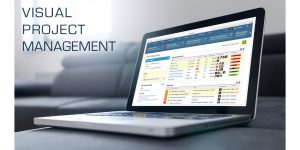Let’s talk about project procurement management in this article. This is not because we want to talk about psychology or counseling, but because we are interested in practical aspects, useful for the project.
Projects are not carried out in isolation by the project manager and his team. In fact, most of these require other resources to be able to achieve the defined goals.
Most project management discussions and articles focus on the necessary processes and knowledge, which are certainly important, but insinuate the idea that a project manager and the team can do everything.
This is not true. It is essential to know when you need help and how to get it.
CONTENT INDEX
What is Project Procurement Management?
This is a collaboration with external suppliers in order to obtain or purchase goods and services for one or more projects.
These relationships are often created on the basis of a contract. This is to ensure that the necessary goods or services are received on time and meet the standards required by the purchasing company.
[av_notification title=” color=’green’ border=” custom_bg=’#444444′ custom_font=’#ffffff’ size=’large’ icon_select=’no’ icon=’ue800′ font=’entypo-fontello’ av_uid=’av-m9544t’]
The purpose of Project Procurement Management is to establish and maintain relationships with suppliers of goods and services throughout the project life cycle.
[/av_notification]
This unique function is an essential part of project management and concerns the supervision of a series of temporary operations.
Procurement, in terms of project management, is necessary when purchasing, renting or contracting with the outside in order to achieve the project goal. These relationships, like any process within the project, need management.
Project procurement management is divided into four processes that we see below.
Procurement management planning
Purchases must be identified already during the first planning phase of the project.
In this phase, it is evaluated which objects will be produced or obtained internally and which will instead be produced from the outside.
This information, in turn, will affect the budget and the financial scope of the project.
For each external contractor, there must be a work declaration that serves as a document that delineates exactly what has been contracted.
These statements function as guidance documents through the project. The more specific they are, the better. This avoids confusion later and helps develop more accurate plans.
This process is collected in the procurement management plan which includes requirements documents, risk log, project planning, cost estimates and more.
To guide these decisions, there are tools and techniques, such as the “Make or Buy” or “Lease or Buy” analysis, which help to determine if the activity needs an external supplier or can be carried out internally.
In the case of “Make or Buy” it is a question of buying a resource, while in the case of “Lease or Buy”, we are talking about renting, for a determined period of time, a specific type of resource, generally machinery.
Here are three fundamental questions that the project manager must ask himself:
- How much does it cost to build the resource instead of buying it?
- How will this decision affect the scope of the project?
- How will this decision affect the project’s program?
The execution of procurement management
After completing the documents of the first phase, we move on to the execution phase in which we study the offers received and determine which one to accept.
The comparison is made between advantages, disadvantages, and contractual offers of the various suppliers.
Before deciding, however, a criterion should be based in order to decide which is the best offer for the project. Generally, this offer will not be based solely on price.
It also does not hurt to seek expert advice in certain areas and departments.
A necessary phase will then be the negotiation in order to satisfy the needs of the contractor and the seller.
Proposals are carefully evaluated and, if satisfactory offers are not available, the project management team will solicit new bidders.
The control of procurement management

Once the contracts are signed, the management of these contractors must be integrated into the general management responsibilities.
Contractors can have a negative impact on budgets and programs, so regular status updates are required to review contract agreements. You will have to get updates on the progress of the work and evaluate the performance. In essence, it must be ensured that contractors meet the requirements set out in their contracts.
Although they hire contractors because they believe they are experts in what they do, they still need to regularly monitor their work. Monitoring is essential in order to ensure that this is proceeding as intended.
A centralized system for monitoring and controlling contract changes will be used. It will be essential to evaluate and determine if any changes to contracts are necessary.
There will be formal physical inspections, internal audits and reviews of procurement operations in order to generate reports on performance that provide real-time feedback.
Monitoring the performance of the supplier is as important to the overall project results as the work done by the project team.
The conclusion of procurement management
Just as there is a process to start procurement management, there is also a process to finalize it.
What is expected at the end of the job should be detailed in the initial agreement with the contractor. There should be no confusion between the parties regarding the final product or service.
The closure process does not only concern the conclusion of supply contracts, it also includes the detection of any weaknesses, the documentation of successful processes, and the summary of the project for future needs.
The documentation is important for future projects that may involve completely different teams.
During the closing process, negotiations may be necessary to resolve contractual disputes.
Ideally, however, during the administration and control process, potential problems may be noted in order to begin the mediation process in advance.
The regular check, explained in the previous point, contributes in fact to reach the goal without receiving unpleasant surprises at the end.
Suggestions for optimal procurement management
Each organization develops its own internal policies and procedures when it comes to projects and tenders; however, these purchasing management tips can be applied to all companies:
- Develop a clear understanding of all goals
- Focus on suppliers’ capabilities and how their solutions will help achieve goals and tackle obstacles;
- Resist the temptation to evaluate final decisions based solely on cost;
- Ensure that solutions are not only short-term, unless this is the main goal. Sustainability and future support are always factors to consider.
When we talk about procurement management, there are standard features and functions. For example, most companies prefer to use fewer suppliers and establish long-term relationships, rather than turning to numerous suppliers every time and therefore activating a “price war”.
Establishing and consolidating relationships with suppliers is important because it allows various partners and shareholders to work closely on improvement and coordination activities, for the benefit of the project as a whole.



